Meet: Malinka
I’m excited to introduce you to Carina, the designer behind the Swedish brand Malinka. When I first saw her creations I was most impressed with her use of patterns and love the way she describes her brand, “You are as beautiful in your Malinka digging in your garden as you are in your Malinka going to Berlin on a weekend.” I think this is emulated in Malinka’s beautiful, but very wearable design. And by Carina herself, who was such a delight to talk to!
How did you first learn to sew?
Growing up my mother had a studio / shop where she sewed her own creations. I can recall that there were always fabrics and little boxes with buttons and other fun stuff in them.
I often wished for things, but then I would have to help her make the pattern myself; I wouldn’t get it “just for free.” She often sewed at home in the evenings, and when I woke up in the morning the garment was finished! It was such a lovely surprise.
Where do you find inspiration for your designs?
Much by feeling for what I like and what I need, Malinka should be flattering, but always feel comfortable.
I like looking at small independent blogs, I love those, especially blogs that are doing something completely different: perhaps working with paints, cars, machines. I enjoy taking an idea that does not come directly from other clothing brands.
Then I love my Liberty fabrics, it’s therapy to sew with such beautiful fabrics.
How did you decide to become a designer?
I never thought I would be sewing for a living! But I had a dress that I could not find anywhere, so I started to make one for myself and one for a friend and another friend, and so it began.
Do you have any tips for getting started as a designer?
Do something that you want to wear, and do not look at other brands. Don’t make a whole new huge collection, you might start with something simple and look in case there is demand.
Just remember that you can always expand your business, that is a positive act, because it´s sad to do the opposite; to have to cut your production and give up your vision. Start small and have patience.
Can you tell me about your workspace?
Previously I worked in the shop, I can find it feels a little uncomfortable to stand right up with a big smile when a customer comes in and wants to look at my stuff, so I have a store that serves as a workspace.
I sit and sew while a customer can talk to me and look at my garments. It gives the feeling that the garment is hand stitched and exclusive, while it lightens the mood, and the customers don’t feel so pressured.
What is most important for creating the best fit in your garments?
The fitting issue is difficult, I usually ask the customer to come in and try once if it is possible. For customers who get in touch via the web, I usually focus on the waist. A waist that sits high is better for me than one that sits too far down.
I do emphasize the waist and have the top and bottom airy, it offers a female silhouette.
What is your favorite sewing tool and why?
Phiffikus, always helps me do my work carefully. The phiffikus is a small scale like a seam gauge. I like it because it’s so little and has lots of little “teeth” and has a unique form that makes it easy to use. I have so many things around me so I always look for my scissors and my phiffikus.
(I found a definition and a picture of a phiffikus here, but it is translated from swedish and isn’t very clear. I have never used one before so if anyone has any additional information about them I’d love to hear it!)
How did you choose your name and what does it mean?
Malinka is Polish. My son loves raspberries, and Malina is raspberry in Polish (He was born there, moved to Sweden as a child).
Malinka means “little raspberry”. He came up with the idea, I had thought of Kalinka, for it reminded me of Carina, but felt he was right.
You can see more of Carina’s work via her website or blog, both of which are fun to look at even if you don’t know Swedish!

 Sign In
Sign In

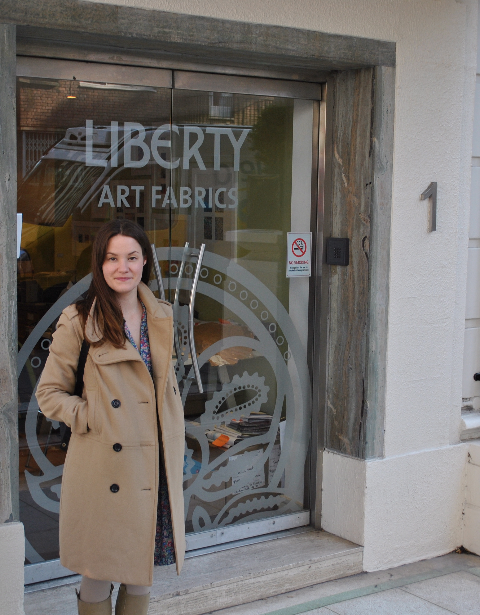
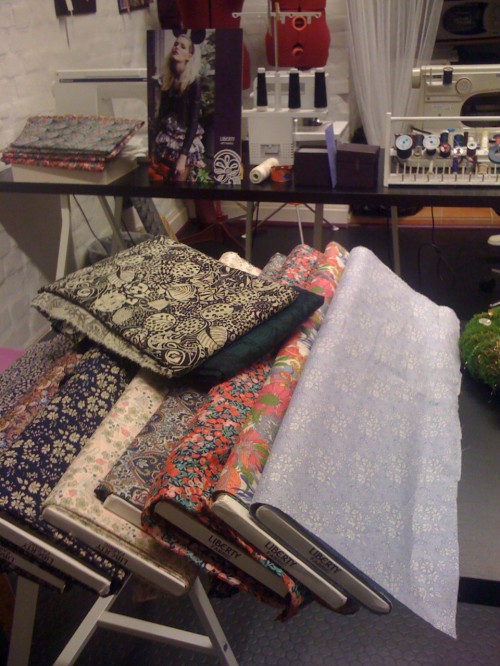
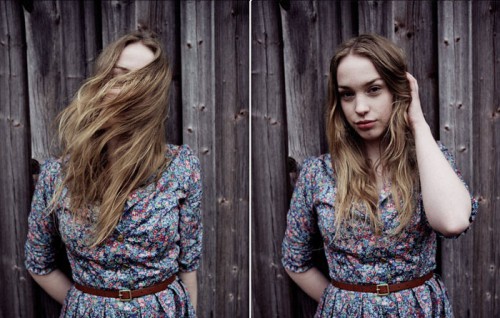
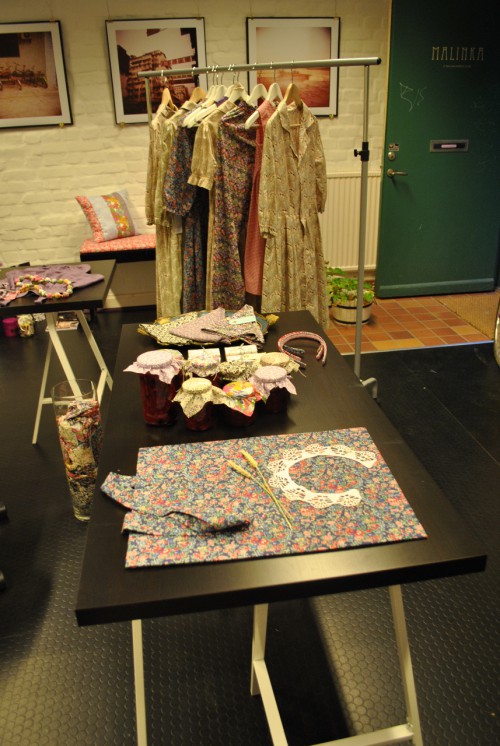
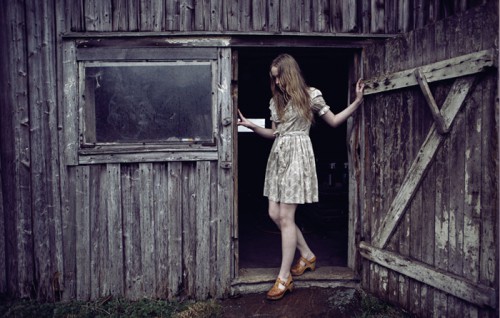
Comments
Jessica
February 22, 2011 #
Thanks for sharing Carina’s work! I could see myself in one of her frocks on a daily basis. Simple and beautiful! As for the phiffikus, I’m happy to discover the little dohickey I use has a name. I received a plastic one from an online seller as a gift and its 2″x2″ size fits perfectly in the palm of my hand. I find it indispensable for hemming, adding seam allowances, and bias tape making. It outshines any other ruler I have used for these purposes. It’s definitely worth trying for yourself!
lladybird
February 22, 2011 #
agreed with jessica – i think we have the same doohickey :) i received mine as a gift from fabric.com. it is pretty similar to the picture on the online translation, except a bit smaller. each side is a different length, and it’s really great for measuring seam allowances & small distances.
KatyRenee
February 22, 2011 #
The phiffikus is like this http://www.clotilde.com/detail.html?prod_id=12720&cat_id=91
sewer
February 22, 2011 #
Her attitude towards clothes is the same as mine and I love Liberty of London fabrics. Enjoyed this.
Anne
February 22, 2011 #
What a nice interview! I live in holland where we call the sewthing a hemmingmate (zoommaatje) and it’s great. I use it al the time, not just for hemming but everytime i need to measure small distances.
sewer
February 22, 2011 #
Bohin, the French company, sells what appears to be the same tool. It’s called a seam measure (upper right corner, #62540). I’ve seen and used similar tools. It’s a sewing gauge.
http://www.bohin.fr/en/iso_album/cg_2006_p42_et_1.pdf
lsaspacey
February 22, 2011 #
And here’s the version available at Fabric.com http://www.fabric.com/ProductDetail.aspx?ProductID=79918646-0c3b-4382-8bb4-0c3012f17d56&CategoryID=6f2bb88f-1aef-4aa9-84c1-e3e2902c8b34 for ONLY 35 cents!